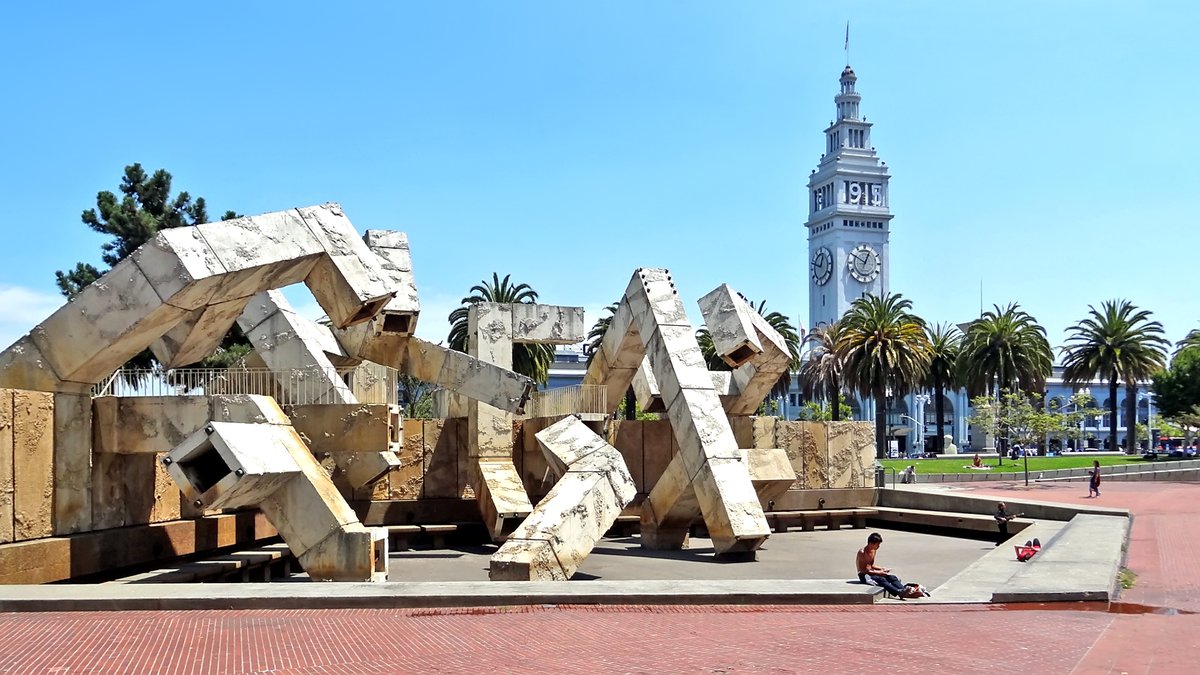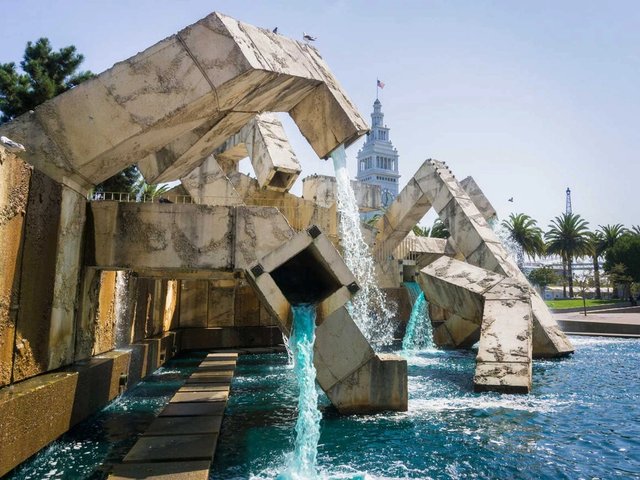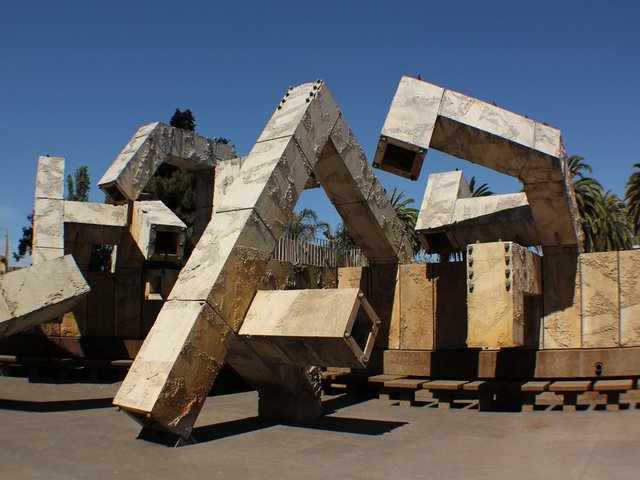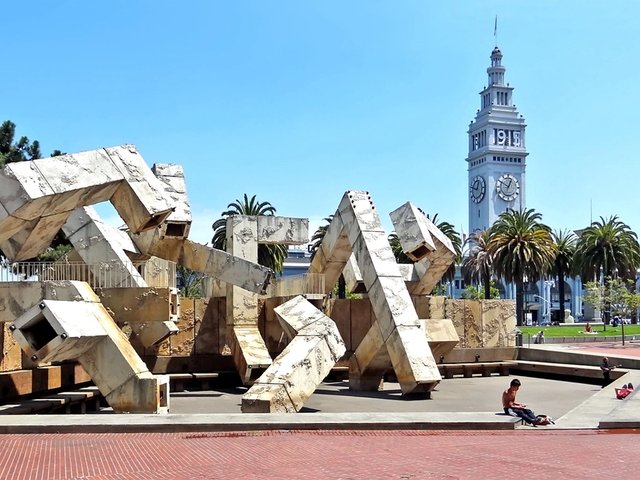Despite considerable public support for its preservation, San Francisco’s 1971 Vaillancourt Fountain is not being included in plans for a new city park where it currently stands.
Although city officials insist no final decision has been made regarding the fate of the sculptor Armand Vaillancourt’s Brutalist masterpiece in Embarcadero Plaza, the fountain was not a part of any of the planning activities prepared for a public consultation that took place on 8 July.
Eoanna Harrison Goodwin, a project manager at the San Francisco Recreation and Park Department (Rec), told an audience of roughly 200 people that construction costs to preserve the fountain have been estimated at $29m. A city spokesperson confirmed to The Art Newspaper that this would not include costs associated with design, permitting or staff time. Rec officials had previously given an estimated figure of $3m for replacing the fountain’s pumps, which failed last year. Approximately $26.5m has been earmarked in public and private funding for the entire plaza renovation project.
Goodwin further said that the estimated cost to dismantle the monument was approximately $2.5m. City officials had previously mentioned the presence of asbestos and lead in the structure, as well as questioned its structural integrity, justifying the erection of a security fence around its perimeter last month.
Several partners—including Rec and the real-estate investment trust BXP (owner of Embarcadero Center’s four office towers)—have proposed redeveloping Embarcadero Plaza and the adjacent Sue Bierman Park into a single new park. They argue that this will rejuvenate the area, provide services that better reflect citizens’ needs and better integrate the space with the city’s tourist-friendly waterfront.
Goodwin told the audience that construction funding had not yet been approved, nor had an environmental assessment been completed. She further stressed that while the object of the public consultation was to solicit input for a future park that would not include the fountain, Rec ultimately was not responsible for the colossal sculpture, which technically belongs to the San Francisco Arts Commission.
Despite these technicalities, it appeared as though Rec and BXP were nonetheless moving forward with their plan. The public session and previous surveys did not provide for scenarios in which the fountain would be preserved. When asked by The Art Newspaper whether this meant the fountain’s fate was sealed, Goodwin insisted that no final decision had been made. When pressed on the issue and asked what, at this point, could save the fountain—given that the city and its partners were already moving ahead with planning for the area’s redevelopment—she responded that it was possible a private donor might contribute the $29m the city had estimated will be needed to fully restore and preserve it.
That said, when the idea of fundraising to preserve the fountain was raised during an hour-long Q&A session later that evening, Goodwin seemed doubtful that this was possible, adding that funds earmarked for plaza redevelopment could not be redirected to preserve public art. The question of whether the public could raise funds to save the fountain was broadly illustrative of the audience’s preference that the sculpture be preserved. Most of the questions asked were either in support of the fountain or about why and how the city had neglected it for so long.
“Site-specific works of art in the landscape rank among the most organic and historically significant representations of our cultural identity and are often the most threatened,” Charles A. Birnbaum, the president and chief executive of The Cultural Landscape Foundation, said in a statement to The Art Newspaper. “Increasingly, the threats are coming from the very entities that commissioned and own these works, including museums and other cultural institutions, and city agencies.” He further called the Vaillancourt Fountain “a widely acknowledged masterpiece, a grand civic gesture and witness to the city’s unique history, and as recognisable as the Transamerica Pyramid and the Palace of Fine Arts”.
City officials pointed out that survey findings supported redevelopment of the site, but they noted that preservation of the fountain or its plaza was not an option. Concerned citizens argued that many of the features proposed for the redevelopment or suggestions made in online surveys—including provision of a plaza for local vendors, green space for picnics and large, open “multi-use spaces” for a variety of programming—are all features of the existing Sue Bierman Park and Embarcadero Plaza.
Moreover, some of the city’s justifications for redeveloping the site—such as the apparent need to attract more visitors—were undermined by the results of its own surveys. Most respondents indicated that they came to the park and plaza often (once a week or more) and walked or took public transit to get there. If the aim is to redevelop the site to better suit the needs of San Franciscans, the public consultation made it seem like many of those needs were already being met and that the public’s primary concern, preservation of the Vaillancourt Fountain, was not being considered at all.





